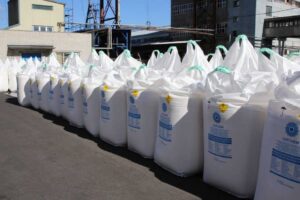
The plants of nitrogen holding Ostchem produced 1.33 million tons of mineral fertilizers in January-September 2024, down 15.3% from the same period in 2023, the holding said in a statement on Thursday.
According to the report, Cherkasy-based Azot produced 1.06 million tons of mineral fertilizers, down 13.11% year-on-year, and Rivne Azot produced 304.9 thousand tons, down 12.2%.
Production declined for all major types of nitrogen fertilizers.
Ammonium nitrate production decreased by 16.09% to 547.6 thousand tons. UAN production, which had previously shown the highest growth rate, fell by 11.68% to 417.9 thousand tons. The biggest drop in Ukrainian production was for such fertilizers as urea, down 20.17% to 263 thousand tons, and UAN, down 48.9% to 18.9 thousand tons. Production of commercial ammonia also decreased by 11.4% to 43 thousand tons.
“Today we produce as much as the market is ready to consume. Our plants were unevenly loaded in 2024 and are still not operating at full capacity. However, the hot season has now begun, and production capacity is being utilized more. Despite rising gas prices, blackouts, and increased imports from Russia-friendly countries, we are on track to meet our production targets. Ukrainian fertilizers for the agricultural sector are produced in accordance with commercial contracts, and not a single delivery has been disrupted this year,” said Sergiy Pavlyuchuk, Chief Operating Officer of Ostchem.
He added that Cherkasy Azot and Rivne Azot continue to improve the production process and implement modern energy saving solutions. In particular, the installation of an in-house power generation system helped reduce electricity consumption by 40%.
As reported, on April 12, 2024, Group DF International and South Korean Hyundai Engineering signed a large-scale agreement to build a chemical hub in Rivne. The project envisages the construction of green ammonia and hydrogen plants based on renewable energy sources; new enterprises and production sites for the production of nitrogen fertilizers and chemical derivatives.
Ostchem is a nitrogen holding of Dmitry Firtash’s Group DF, which unites the largest mineral fertilizer producers in Ukraine. Since 2011, it has included Rivne Azot and Cherkasy Azot, as well as Severodonetsk Azot and Stirol, which are out of operation and located in the occupied territories.
Cherkasy Azot PJSC (Cherkasy, Ukraine) is one of the largest Ukrainian chemical enterprises. The design production capacity is 962.7 thousand tons of ammonia per year, 970 thousand tons of ammonium nitrate per year, 891.6 thousand tons of urea, and one million tons of UAN per year.
Rivne Azot is one of the largest Ukrainian chemical companies in Western Ukraine. On April 12, 2024, Group DF and South Korean Hyundai Engineering signed an agreement to build a chemical hub in Rivne. The project envisages the construction of green ammonia and hydrogen plants based on renewable energy sources; new enterprises and production sites for nitrogen fertilizers and chemical derivatives.
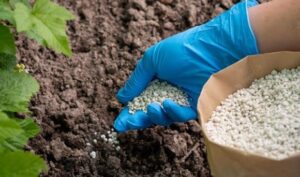
Rivne Azot, a part of Group DF’s nitrogen business, has resumed operations and reached 100% capacity at its basic fertilizer production shops, the company’s press service reports.
“The forced shutdown of the basic shops a month ago was caused by damage to the energy infrastructure in the region during the shelling. During the plant shutdown, we carried out maintenance and reconstruction of a number of production systems, including the power supply system at the enterprise. This will help reduce production risks and ensure stable operation of the plant’s basic shops during the season. We have successfully completed the commissioning of key units and launched the plant at full capacity to meet the growing seasonal demand for mineral fertilizers from farmers,” said Mykhailo Zabluda, Chairman of the Board of Rivne Azot.
According to the report, the plant has launched an ammonia shop (A-2), a nonconcentrated nitric acid shop and an ammonium nitrate shop. The capacity of the loaded ammonia line is 650 tons of ammonia per day and that of the non-concentrated nitric acid line is 1,000 tons of nitric acid per day. The ammonium nitrate shop will operate at the maximum capacity of the ammonia line, i.e. at least 40 thousand tons of nitrate per month.
Currently, the plant is focused on supplying fertilizers to the domestic market of Ukraine. The products are shipped to customers across the country under contracts.
As reported earlier, Group DF’s capital investments in Ostchem’s nitrogen business in 2024 will amount to about EUR86 million. The purpose of the CAPEX investment is to optimize cost coefficients, reduce losses of various types of energy and improve the cost of finished products.
On April 12, Group DF and Hyundai ENGINEERING CO signed an agreement to build a chemical hub in Rivne. The project envisages the construction of green ammonia and hydrogen plants based on renewable energy sources; new enterprises and production sites for nitrogen fertilizers and chemical derivatives.
Ostchem has launched a 300,000-tonne-per-year production facility for UAN at Rivne Azot. The project is primarily aimed at farmers in the western regions of Ukraine.
Ostchem is a nitrogen holding of Dmitry Firtash’s Group DF, which unites the largest mineral fertilizer producers in Ukraine. Since 2011, it has included Rivne Azot and Cherkasy Azot, as well as Sievierodonetsk Azot and Stirol, which are out of operation and located in the occupied territories.
Cherkasy Azot PJSC (Cherkasy, Ukraine) is one of the largest Ukrainian chemical enterprises. The design production capacity is 962.7 thousand tons per year of ammonia, 970 thousand tons per year of ammonium nitrate, 891.6 thousand tons of urea, and 1 million tons per year of UAN.
Rivne Azot is one of the largest Ukrainian chemical companies in Western Ukraine. On April 12, 2024, Group DF and South Korean Hyundai Engineering signed an agreement to build a chemical hub in Rivne. The project envisages the construction of green ammonia and hydrogen plants based on renewable energy sources; new enterprises and production sites for nitrogen fertilizers and chemical derivatives.

Plants of nitrogen holding Ostchem, which unites enterprises of nitrogen business of Group DF, produced 959.7 thousand tons of mineral fertilizers in the first half of 2023, which is 60.9% more than in the same period last year, when 596.3 thousand tons were produced.
According to the press release of Group DF on Wednesday, Rivneazot produced 201.2 thousand tons, Cherkassy Azot 758.6 thousand tons, including in May it reached the maximum since the beginning of the war – 138.6 thousand tons.
It is specified that the structure of production in the first half of the year corresponded to the structure of demand for nitrogen fertilizers, taking into account the prices of competitors and the margins of individual products. The key products were: ammonium nitrate – 398.7 thousand tons (313.3 thousand tons in 6M 2022); urea-ammonia mixture (UAN) – 277.7 thousand tons (116.8 thousand tons); urea – 205.9 thousand tons (76.4 thousand tons). At the same time, production of limestone-ammonium nitrate (UAN) dropped almost fourfold to 17.2 thousand tons.
“Ostchem’s enterprises have adapted to work under war conditions. Under the conditions of war risks, logistical problems, blackouts and unscheduled shutdowns, the plants managed to pass peak load periods and ensure timely shipment of fertilizers to agrarians clearly in accordance with the concluded agreements,” the report quotes Ostchem’s nitrogen business head Sergiy Pavliuchuk as saying.
According to him, at the moment the main task is to prepare production facilities for the fall season, and after the completion of repairs key workshops will be launched, and the load of plants in August will increase.
It is noted that the main factors that contributed to a successful spring season and the implementation of the production plan are increased demand from farmers and large agricultural holdings and increased sales due to soft loans, acceptable gas prices and lower fertilizer selling prices, as well as the spring sowing season delayed due to weather conditions.
“Our companies are ready to produce as much fertilizer as the market can buy. Illegal imports of repackaged Russian fertilizers are holding back the development of the domestic chemical industry,” said Oleg Arestarhov, Head of Corporate Communications at Group DF.
According to him, Russian fertilizers are imported to the customs territory of Ukraine from five countries of the former Soviet Union. In particular, Arestarhov specified, since the beginning of this year, 382.8 thousand tons of urea were imported into Ukraine, including 269.5 thousand tons from Turkmenistan, Uzbekistan and Azerbaijan, while domestic production amounted to 205.9 thousand tons.
“With such a volume of imports, it will be much more difficult for urea producers such as Dniprazot and OPZ, which are now standing, to start up,” said the head of Group DF’s corporate communications department.
The release also notes that Ostchem will continue to increase production volumes in new sectors of chemistry. In particular, the company counts on AdBlue – a liquid reagent for diesel cars, the production volume of which amounted to 4.2 thousand tons in the first half of the year.
In addition, production of carbon dioxide in the first half of 2023 amounted to 10.1 thousand tons, while during this period Cherkassy Azot has been increasing its output on a monthly basis, and Ostchem has started to develop its logistics infrastructure to ensure stable supplies of industrial gases both in Ukraine and Europe.
Group DF consolidates Dmytro Firtash’s assets in the gas distribution, chemical, titanium and port industries, as well as in agriculture and media.
Ostchem is the nitrogen holding company of Group DF, which unites the largest mineral fertilizer producers in Ukraine. It includes Rivneazot, Cherkasy Azot, as well as Severodonetsk Azot and Stirol, which are out of operation and located in the occupied territories.
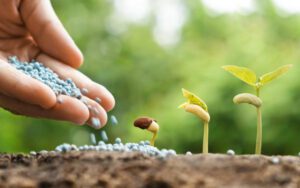
The average level of provision of Ukrainian agricultural enterprises with mineral fertilizers for spring field work as of January 28, 2022 was 22%, having increased by 11% over the period of January 20 through January 28, according to a presentation on the website of the Ministry of Agrarian Policy and Food on Friday.
According to the ministry, it does not yet have data on fertilizer stocks in six regions: Zakarpattia, Kyiv, Lviv, Sumy, Kherson and Cherkasy.
Kharkiv (65% of the total demand) and Zaporizhia regions (57%) are best provided for the upcoming sowing season, followed by Chernivtsi and Ivano-Frankivsk (40% each), Kirovohrad and Khmelnytsky (29% each), Vinnytsia and Zhytomyr (26% each), Ternopil (25%), Donetsk (24%), Dnipropetrovsk (20%), Mykolaiv and Odesa (17% each), Volyn (14%), Poltava (12%), Chernihiv (10%), Rivne ( 6%) and Luhansk (4%) regions.
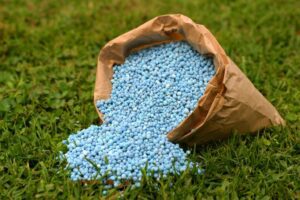
The average level of provision of agricultural enterprises with mineral fertilizers for spring-summer field work in Ukraine as of January 20, 2022 is 11%, according to a presentation on the website of the Ministry of Agrarian Policy and Food.
According to it, data on fertilizer reserves of 11 regions – Vinnytsia, Dnipropetrovsk, Zakarpattia, Kyiv, Lviv, Sumy, Kharkiv, Kherson, Cherkasy, Chernivtsi and Chernihiv regions – have not yet been provided to the ministry.
Zaporizhia region is the most provided for the upcoming sowing season (57% of the need), followed by Khmelnytsky (26%), Zhytomyr (22%), Donetsk (21%), Kirovohrad (20%), Ternopil (15%), Mykolaiv and Ivano-Frankivsk (13% each), Poltava (12%), Volyn (10%), Odesa (7%), Rivne (6%) and Luhansk (1%) regions.
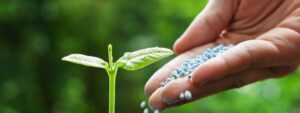
Public associations of farmers are asking the government to consider the possibility of providing chemical enterprises with a commodity loan for 1.25 billion cubic meters of natural gas for the production of mineral fertilizers, this will avoid a shortage of fertilizers and “unrestrained price increases” for them next spring.The corresponding appeal of the Ukrainian Agribusiness Club (UAC), the Agrarian Union of Ukraine, the Federation of Employers, the Union of Chemists of Ukraine, the Ukrainian League of Industrialists and Entrepreneurs, the Council of Entrepreneurs under the Cabinet of Ministers of Ukraine, the Ukrainian Agri Council and the Ukrainian Agrarian confederation to Prime Minister Denys Shmyhal was published on the UAC’s website.As stated in the appeal, over the past month, most of the major European producers of nitrogen mineral fertilizers have reduced production due to a sharp rise in prices for natural gas, which leads to a shortage of mineral fertilizers in the European and world markets.According to UAC, Ukraine meets the needs for mineral fertilizers mainly due to domestic production, while in order to provide the country’s sowing campaign, 2.3 million tonnes of fertilizers are needed for the period of November 2021-May 2022, of which 75% is expected from domestic production and 25% – from import supplies.In such conditions, an important component of providing Ukrainian farmers with nitrogen fertilizers is the stable and uninterrupted operation of domestic producers, primarily in the winter period, when their stock is formed for the spring sowing campaign and feeding winter crops. In turn, this can be achieved only if there is a necessary supply of natural gas, the main raw material for the chemical industry at a stable price.The associations in their appeal suggested that the government consider the possibility of allocating a commodity loan for 1.25 billion cubic meters of natural gas to domestic producers of nitrogen fertilizers for the period from November 2021 to April 2022 at the expense of the reserves of NJSC Naftogaz Ukrainy.